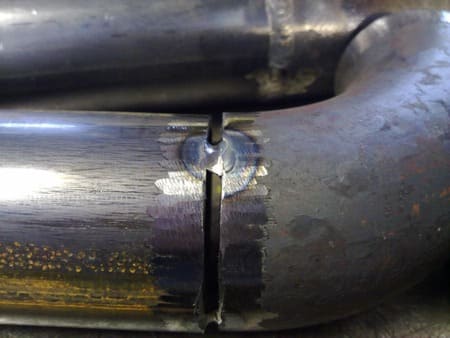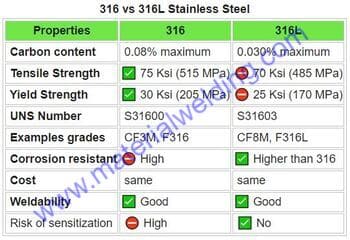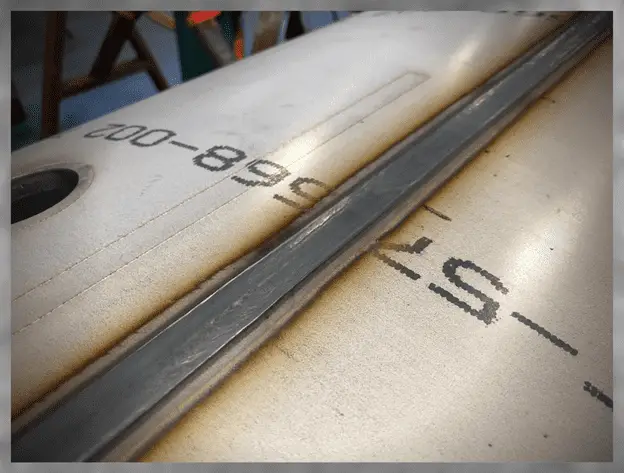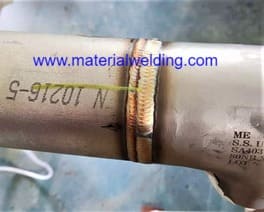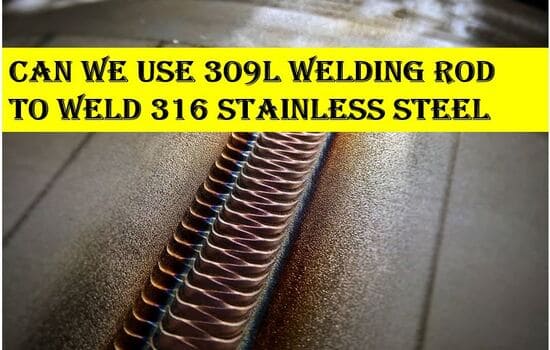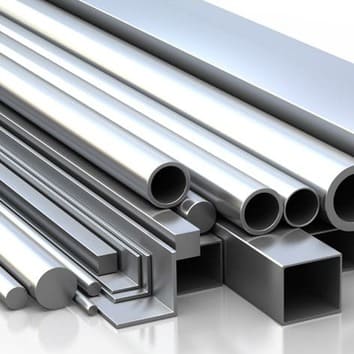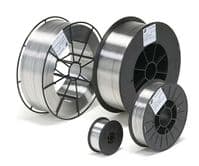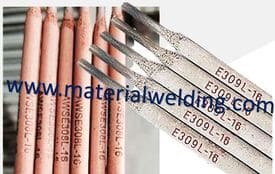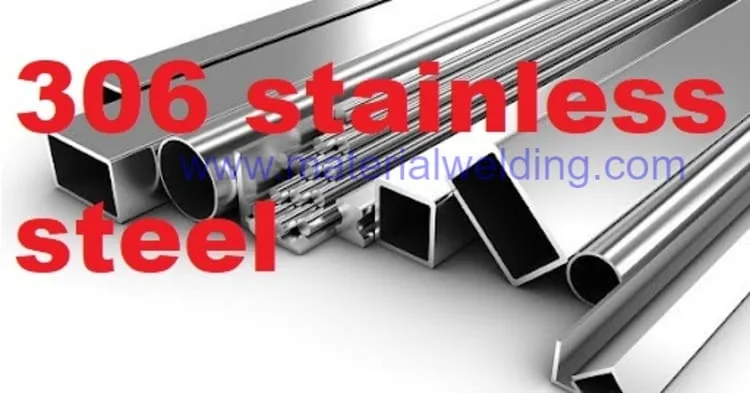This article covers in depth welding guidelines of 316 stainless steel welding and 316 to other material such as mild steel, low alloy steel, Inconel and other stainless-steel grades (304, 310, 321, 2205).
Before we know the welding requirements, first let us understand the 316 stainless steel available grades, metallurgy and its mechanical properties.
316 Stainless Steel Material Specification
316 steel is an austenitic stainless steel with P Number 8. The UNS Number of 316 stainless steel is S31600. The ISO/ EN equivalent grade of 316 stainless is 1.4401.
Check out The Properties of 316 and 316L Stainless Steel Explained
316 stainless steel grade is available in following variants:
- 316
- 316L
- 316H
- 316Ti
- 316Cb
- 316N
- 316LN
The commonly used 316 stainless steel material specifications are ASTM A182, A193, A194, A213, A217, A240, A249, 312, A351, EN10088-3, etc.
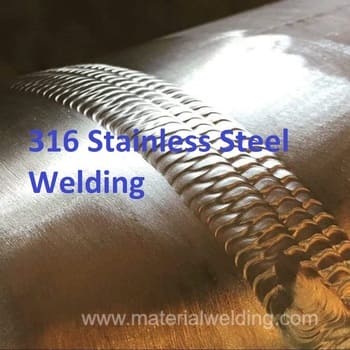
316 Stainless Steel Chemical Composition
316 stainless steel is an austenitic chromium-nickel stainless steel that contains between 2 and 3% molybdenum.
The addition of molybdenum gives 316 stainless steel better corrosion resistance than 304 stainless steel, while also providing increased strength at elevated temperatures.
Complete 316 & 316L stainless steel chemical composition as required by ASTM A240 specification are given in the below table.
Check out my article to for 316 vs 316L Stainless Steel, What’s the difference?
| Grade | 316 | 316L |
| Element | Weight % | Weight % |
| Carbon | 0.08 | 0.030 |
| Manganese | 2.00 | 2.00 |
| Silicon | 0.75 | 0.75 |
| Chromium | 16 -18 | 16 -18 |
| Nickel | 10- 14 | 10- 14 |
| Molybdenum | 2.0- 3.0 | 2.0- 3.0 |
| Nitrogen | 0.10 | 0.10 |
| Sulfur | 0.30 | 0.30 |
| Phosphorus | 0.045 | 0.045 |
316 Stainless Steel Mechanical Properties
316 stainless steel has excellent mechanical properties. It is both strong and ductile, making it an ideal choice for a wide range of applications. 316 stainless steel has a higher yield strength than 304 stainless steel and can operate at elevated temperatures. It also possesses good creep, stress-to-rupture, and tensile strength at high temperatures.
Properties of 316 stainless steel are listed in the below table:
| Property | Valve |
|---|---|
| Yield Strength, Ksi (MPa) | 75 (515) |
| Tensile Strength, Ksi (MPa) | 30 (205) |
| Elongation % | 40 minimum |
| Hardness Brinell (HRBW) | 217 (95) |
316 Stainless Steel Welding Rods
The use of 316 stainless steel welding rods is recommended for best results when welding this alloy.
316 stainless steel welding rods are available in a variety of diameters and lengths.
They can be used for a wide range of welding applications, including orbital welding, TIG welding and MIG welding.
The main 316 welding rod is E316-15, E316-16, E316-17 as per AWS A5.4 specification. 316 TIG welding rods are classified in AWS A5.9. Following 316 welding rods are used for welding different grades of 316 stainless steel:
- E316-15/16
- E316L-15/16
- E316H-15/16
- E316LMn-15/16
316 Stainless Steel Welding Wire
316 Stainless Steel Welding Wire, as per AWS A5.9 specification are ER316, ER316L, ER316LSi. These rods are used for welding in many industries including food and beverage, pharmaceuticals, oil and gas, and more.
This wire provides excellent corrosion resistance in many environments and can be used in both indoor and outdoor applications. Additionally, this wire offers good mechanical properties and is easy to weld with.
316 Stainless Steel Welding Gas
Pure argon is used for TIG welding to create a cleaner weld, while a mixture of argon and 2-4 oxygen is used for mig welding to create a stronger weld. The 316 stainless steel welding gas is an industrial grade gas, and it’s important to use the right gas for the right application.
Stick welding 316 Stainless Steel
Stick welding of 316 stainless steel is caried out using E316-15 or E316-16 welding rod. Use E316L-15 when welding AISI 316L grade. Similarly, E316H-15 welding rod to be used when welding 316H (high carbon 316 SS grade).
Stick welding of 316 stainless steel shall be made using DCEP (Reverse welding polarity). This will provide better weld deposit mechanical properties with good weld penetration.
TIG welding 316 Stainless Steel
The TIG process is well suited for welding 316 stainless steel due to its excellent corrosion resistance and high strength properties.
When welding 316 stainless steels, it is important to use a filler metal that matches the composition of the base metal.
Most common filler metal for 316 stainless steel are ER316L & E316LSi. This filler metal will provide good mechanical and corrosion properties while still allowing the weld to match the base material. ER316H is used for welding 316H grade.
Welding using ER316LSi (with extra silicon) provides better wetting characteristics to sluggish stainless steel weld pool. Thus improve weld bead appearance.
Use pure argon gas shielding with DCEN (Straight polarity) for welding 316 Stainless steel and other 316 grades such as 316L or 316H, for example.
When welding 316 stainless steel, use low heat input. This will improve weld metal microstructure and toughness. High heat input during 316 stainless steel welding can result in high weld metal ferrite with inferior properties.
MIG welding 316 Stainless steel
The most important thing to remember when MIG welding 316 Stainless steel is to use the right wire. ER316 or ER316LSi are the best choices for this type of metal. MIG welding of 316 stainless steel is often done using ER316 or ER316LSi wire.
MIG welding 316 Stainless steel is carried out using DCEP or Reverse welding polarity. DCEP gives good weld bead penetration and appearance along with improved weld metal properties.
Another important factor to consider when MIG welding 316 Stainless steel is the gas mixture. When welding 316 stainless steel, use a gas mixture with 2% oxygen and 98% argon.
Welding 316 Stainless Steel to mild steel
When welding 316 stainless steel to mild steel, you need to use a filler metal that is compatible with both metals.
For stick welding, use E309L-15 or E309L-16 welding rod. For TIG welding 316 stainless steel to mild steel, use ER309L or ER309LSi with pure argon shielding gas and DCEN welding Polarity.
For MIG welding, 316 stainless steel to mild steel, use ER309L or Er309LSi welding filler wire, a gas mixture of argon with 2-4% oxygen and DCEP welding polarity.
Use separate welding tools such as grinder, cleaning brush, wire brush and hammer for welding stainless steel material.
Welding 316 to Inconel 625
Welding 316 to Inconel 625 is a process that can be completed using the right welding rod or filler wire. The two metals have similar melting points and weldability, making them ideal for welding together.
The main difference between the two metals is their chemical makeup; Inconel 625 is having high nickel, chrome and moly, while 316 is made of low nickel and Moly.
This means that Inconel 625 is less likely to corrode than 316, making it the ideal choice for welding in high-corrosion environments.
Stick welding 316 to Inconel 625 is carried out using ENiCrFe-2 or -3 welding rod. TIG and MIG welding are made using ERNiCr-3 (Inco 625) welding filler wire rod.
When TIG welding 316 to Inconel 625 use pure argon for welding shielding & purging with DCEN welding polarity.
Welding 316 to 321 Stainless Steel
316 is an austenitic stainless steel with chromium, nickel and molybdenum, while 321 is a titanium-stabilized austenitic stainless steel with chromium and nickel.
The main difference between the two alloys is the addition of titanium to 321, which reduces or prevents carbide precipitation during welding and exposure to high temperatures. This makes321 more resistant to intergranular corrosion than 316.
Stick Welding Rod for welding 316 to 321 is E316-15 or E347-15. For welding 316L to 321 you can use E316L-15 or E347L-15 rod.
Check out Difference between E309L-15, 16 17, E316L-15,16 and 17
When welding 316 to 321, it is important to use a filler metal that has similar chemical composition as the base metals.
For TIG and MIG welding of 316 to 321 stainless steel, ER316LSi or ER321 or ER347 would be appropriate choices. It is also important to use a low heat input when welding these two alloys together, as too much heat can cause carbide precipitation and weld metal embrittlement.
Welding 316 to 2205
316 is a stainless steel while 2205 is a duplex stainless steel. For welding 316 stainless steel to 2205 duplex stainless steel, you can use either stick welding or TIG-MIG welding.
To know more about Duplex stainless steel welding, Read my article for welding of 2205 Duplex Stainless Steel.
Stick welding of 316 to 2205 is carried out using E2209-15 or E309LMo-15 welding rod. TIG and MIG welding of 316 to 2205 is carried out using ER2209 or ER309LMo welding filler wire. When welding using TIG and MIG welding, an external shielding and purging gas is required.
Welding 316 to 310 SS
Welding 316 to 310 SS is carried out using E309-15 or E309L-15 or E310-15 welding rod. Any of these stick welding rod can be used to successfully weld 310 stainless steel to 316 stainless steel.
Similarly, TIG welding of 316 to 310 stainless steel can be made using ER309L, ER309LSi or ER310 filler wire rod.
Welding 316 Stainless Steel with 309 Rod
Welding 316 Stainless Steel with 309 Rod is not recommended. For welding 316 to 316 itself, use a matching filler wire such as ER316 or ER316LSi type.
Welding 316 with 309 rod will result in higher weld metal ferrite and thus result in reduced corrosion resistance, lower ductility and lower toughness.
Read more:
